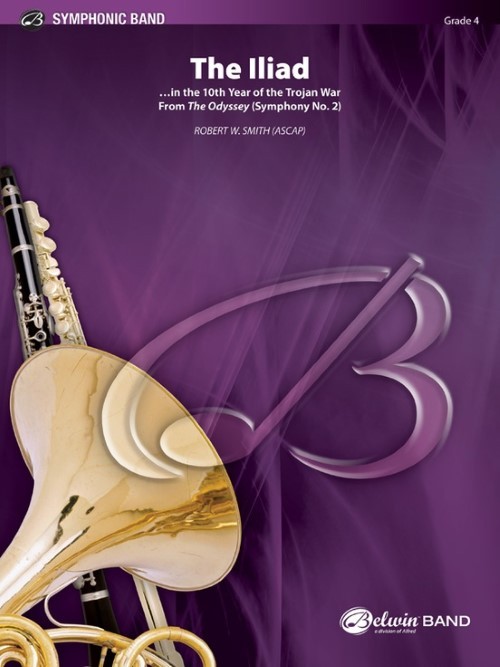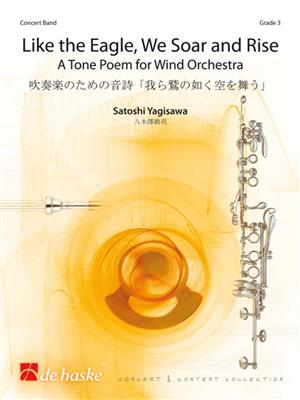Results
-
£139.99
Cobra - Jan Bosveld
Shortly after the Second World War, a combative movement of Danish, Belgian and Dutch artists chose the cobra snake - extremely dangerous yet considered sacred - as a symbol of their resistance to strict guideliness of form. The name "Cobra" also happens to contain the first letters of the cities Copenhagen, Brussels ans Amsterdam, from where most of the movement's members came. The Cobra movement, which existed from November 1948 until November 1951, can with some justicication be called the last major avant-garde movement of the 20th century.The source of inspiration for the composition Cobra comes from four paintings: "Obhobning" by the Dane Egill Jacobsen; "La jeune fille et lamort" by the Belgian Pierre Alechinsky; "Orgeldraaier" and "Le rythme joyeux de la ville" by the Dutch artists Karel Appel and Corneille. Obhobning means "pile-up", which is represented musically in the first part by a melodic and harmonic pilling up of perfect fourth's. The first part is also characterized by a rhythmic feeling, which the painting gives through its use of numerous black stripes. In the painting La jeune fille et la mort, Pierre Alechinsky places a young girl opposite Death. The second part features the constantly pulsating motion of live while a creeping, dark, melodic line develops. The tension between life and death is tangible as a battle reveals itself. In part three, one hears the Orgeldraaier by Karel Appel, as cheerful and playful as an organ grinder's music. The painting Le rythme joyeux de la ville by Corneille is busy and extremely dynamic, a perfect source of inspiration for a powerful, rhythmic ending to this composition.
Estimated delivery 7-14 working days
-
 £87.50
£87.50The Iliad (from The Odyssey, Symphony No.2) (Concert Band - Score and Parts) - Smith, Robert W.
Calls to war are the prelude to this first movement of Robert W. Smith's Second Symphony for band, based on the classic story of 'The Odyssey'. You'll experience the squeaky wheels of the Trojan horse, the forest burning, and the sword fight amidst the distinguished regal melodies and energetic rhythms that drive to a conclusion. The ocean's presence is evident in the optional transition to the second movement, "The Winds of Poseidon". Much awaited, this work is monumental in nature. Duration: 7.45
Estimated delivery 7-14 working days
-
 £139.99
£139.99Cobra Wind Band Set (Score & Parts)
Shortly after the Second World War, a combative movement of Danish, Belgian and Dutch artists chose the cobra snake - extremely dangerous yet considered sacred - as a symbol of their resistance to strict guideliness of form. The name "Cobra" also happens to contain the first letters of the cities Copenhagen, Brussels ans Amsterdam, from where most of the movement's members came. The Cobra movement, which existed from November 1948 until November 1951, can with some justicication be called the last major avant-garde movement of the 20th century.The source of inspiration for the composition Cobra comes from four paintings: "Obhobning" by the Dane Egill Jacobsen; "La jeune fille et la mort" by the Belgian Pierre Alechinsky; "Orgeldraaier" and "Le rythme joyeux de la ville" by the Dutch artists Karel Appel and Corneille. Obhobning means "pile-up", which is represented musically in the first part by a melodic and harmonic pilling up of perfect fourth's. The first part is also characterized by a rhythmic feeling, which the painting gives through its use of numerous black stripes. In the painting La jeune fille et la mort, Pierre Alechinsky places a young girl opposite Death. The second part features the constantly pulsating motion of live while a creeping, dark, melodic line develops. The tension between life and death is tangible as a battle reveals itself. In part three, one hears the Orgeldraaier by Karel Appel, as cheerful and playful as an organ grinder's music. The painting Le rythme joyeux de la ville by Corneille is busy and extremely dynamic, a perfect source of inspiration for a powerful, rhythmic ending to this composition. 0:09:57
Estimated delivery 7-14 working days
-
 £87.50
£87.50The Iliad (from The Odyssey (Symphony No. 2)) - By Robert W. Smith
Calls to war are the prelude to this first movement of Robert W. Smith's Second Symphony for band, based on the classic story of 'The Odyssey'. You'll experience the squeaky wheels of the Trojan horse, the forest burning, and the sword fight amidst the distinguished regal melodies and energetic rhythms that drive to a conclusion. The ocean's presence is evident in the optional transition to the second movement, "The Winds of Poseidon" (BD9923). Much awaited, this work is monumental in nature. (7:44)
Estimated delivery 3-5 days
-
 £119.20
£119.20Sinfonisches Prludium - Anton Bruckner
The Symphonic Prelude in C minor is an orchestral composition from the circle of the Austrian composer Anton Bruckner. The unearthing of this work, discovered shortly after World War II, has created confusion, leading to a second, reduced version being attributed to Gustav Mahler, a theory which still holds sway in musical circles today, although there is a high probability that the original composition is indeed by Bruckner himself. Rudolf Krzyzanowski (1895-1911), a pupil of Bruckner, transcribed the score in 1876. The 43-page manuscript bears the inscription Rudolf Krzyzanowski cop. 1876 on the first page; while on the last page is written in blue pencil: By Anton Bruckner.Thomas Doss used a facsimile of this autograph copy as the basic of his instrumentation of the prelude for symphonic wind orchestra.
Estimated delivery 7-14 working days
-
 £89.99
£89.99Adagio - Tomaso Albinoni
The Adagio is based on a manuscript that was discovered in the Dresden State Library after the Second World War by Remo Giazotto, a Milanese musicologist who was working on Albinoni's biography at the time. Only the bass line and six bars of melody were found and they probably belonged to the slow movement of a Trio Sonata. In 1945 Giazotti reconstructed the now famous Adagio which has made Albinoni known to a worldwide audience.
Estimated delivery 7-14 working days
-
 £84.99
£84.99Saint Paul's Cathedral - Filip Ceunen
Saint Paul's Cathedral in London has been rebuilt several times over the centuries. The building of today's cathedral began at the end of the 17th Century and lasted some 30 years. It was partly damaged in the bombing raids of the Second World War. The building is known above all for the monumental dome and for the many personalities who are laid to rest - such as Admiral Nelson, Florence Nightingale and Winston Churchill. In Saint Paul's Cathedral, Philip Ceunen gives his own impression from his visit to this iconic building.
Estimated delivery 7-14 working days
-
 £204.99
£204.99Credentium - Jan Van der Roost
A spectacular dive via an extended chromatic scale immediately submerges us in a charged and somewhat archaic-feeling atmosphere. Trumpets, horns and trombones resound in rhythmic patterns, buttressed by restless motifs in the percussion. A second theme, in the woodwinds, begins much calmer but is quickly pushed aside by that same brass offensive. This introduction is the musical expression of the sometimes tumultuous early history of the town of Peer in Belgium. It closes with a D scale played over two octaves and repeated three times, symbolizing the church steeples that dominate the townscape. Peer has the credentials of a town, and people should know about it.There followsa rhythmic, turbulent passage: in the course of history, Peer has not been spared the ravages of war, arson, occupation, epidemic and other evils. In contrast, a slow, pastoral, lyrical part expresses the periods of peace and prosperity the town has known, as well as the serene geographic setting that still characterizes the place. Various instruments in groups are developed in solo style while the accompaniment displays vast, painterly images of sound. Now and then an exotic intonation is heard: a variety of peoples and cultures have left their mark on the town.This episode of tranquility and peacefulness comes to a sudden end when, via a surprising, almost chaotic transitional passage, we are in effect transported back to our own time. A hopeful, festive march expresses the confidence in the future that the Royal Concert Band of Peer exudes. This confidence is wholly justified: under the direction of conductor Willy Fransen, the 95 members of the concert band have experienced an extended period of good fortune, and the 75 musicians of the youth band - and the 45 little musicians of the mini-band - are involved in thriving operations.
Estimated delivery 7-14 working days
-
 £109.60
£109.60Fields of Deliberation - Kevin Houben
Fields of Deliberation was written by composer Kevin Houben for the 'Limburgs Fanfare Orkest'. The occasion was the concert cycle that appropriately commemorated the end of the Second World War (in 2020, 75 years ago).From the very first beginning till the end, speed, energy and 'drive' characterize this powerful composition. A magnificent lyrical melody is the common thread throughout the piece, without the rapid movement losing pace or intensity. Majestic, grand moments and energetic passages alternate culminating in an impressive highlight.This dynamic concert piece with a cinematic character is a challenge for all the different groups of instruments of the orchestra and is an added value for any concert program.
Estimated delivery 7-14 working days
-
 £144.99
£144.99Like the Eagle, We Soar and Rise - Satoshi Yagisawa
Like the Eagle, We Soar and Rise was commissioned by Yuying Secondary School Concert Band and Yuying Alumni Association for the 2010 centenary of the school's foundation. The piece was named by a friend of the composer named Steven Phua, who originally suggested commissioning a new piece to Satoshi Yagisawa. The piece furthermore takes its name from the text of the Yuying Secondary School song.This composition is based on three different concepts: the first one demonstrates 'The founders' passion for education'; the second concept illustrates 'Hardship in war time'; the third one 'To the future' describes the inner strength people find to overcome struggles. Thispiece concludes with a fanfare, which is the sound of hope that leads to a brighter future in a positive direction.The world premiere of this piece was conducted by Faizal Bin Othman, who is one of the leading educators in Singapore, and was performed by the Yuying Secondary School Concert Band.
Estimated delivery 7-14 working days
